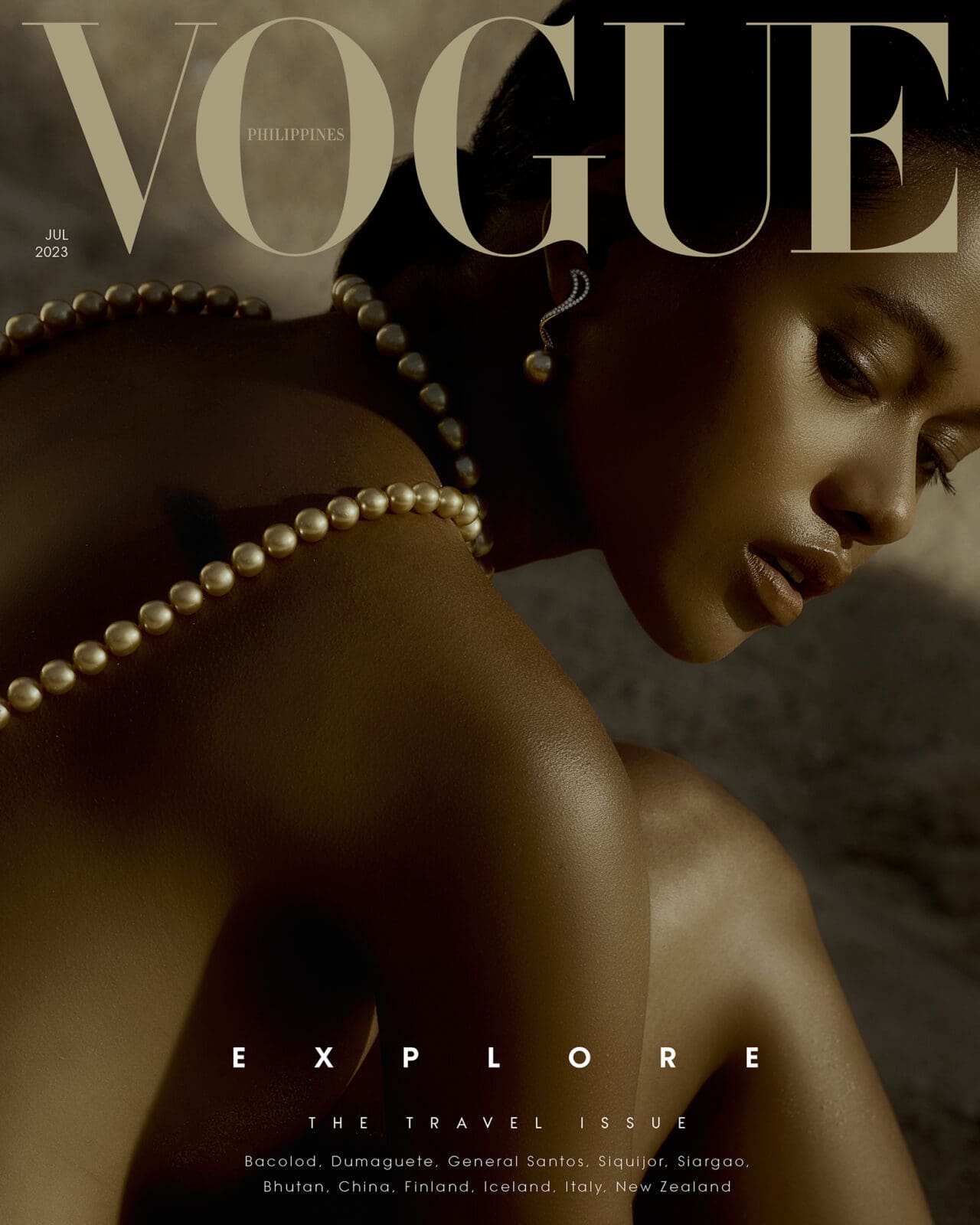Courtesy of Gucci
Gucci Cosmos tells an intimate story of fashion at a grand scale.
The cavernous space in the Westbund Art Center in Shanghai, China used to be an airplane factory. For a time, it will attempt to house the story of Gucci through a sprawling exhibit that traces the fashion house’s 102-year history. Called Gucci Cosmos, it features artist Es Devlin’s immersive, large-scale sculptures and fashion theorist, curator, and critic Maria Luisa Frisa’s selects from the brand’s archives in Florence.
Devlin and Frisa are behind the exhibit’s concept and design, and its curation, respectively. Between the two of them stand Olivier awards, collaborations and exhibits with some of the biggest global fashion brands, projects with Beyoncé, Adele, and U2, various Olympic ceremonies, and countless talks and articles that push the envelope of fashion and art into the realms of poetry and philosophy.

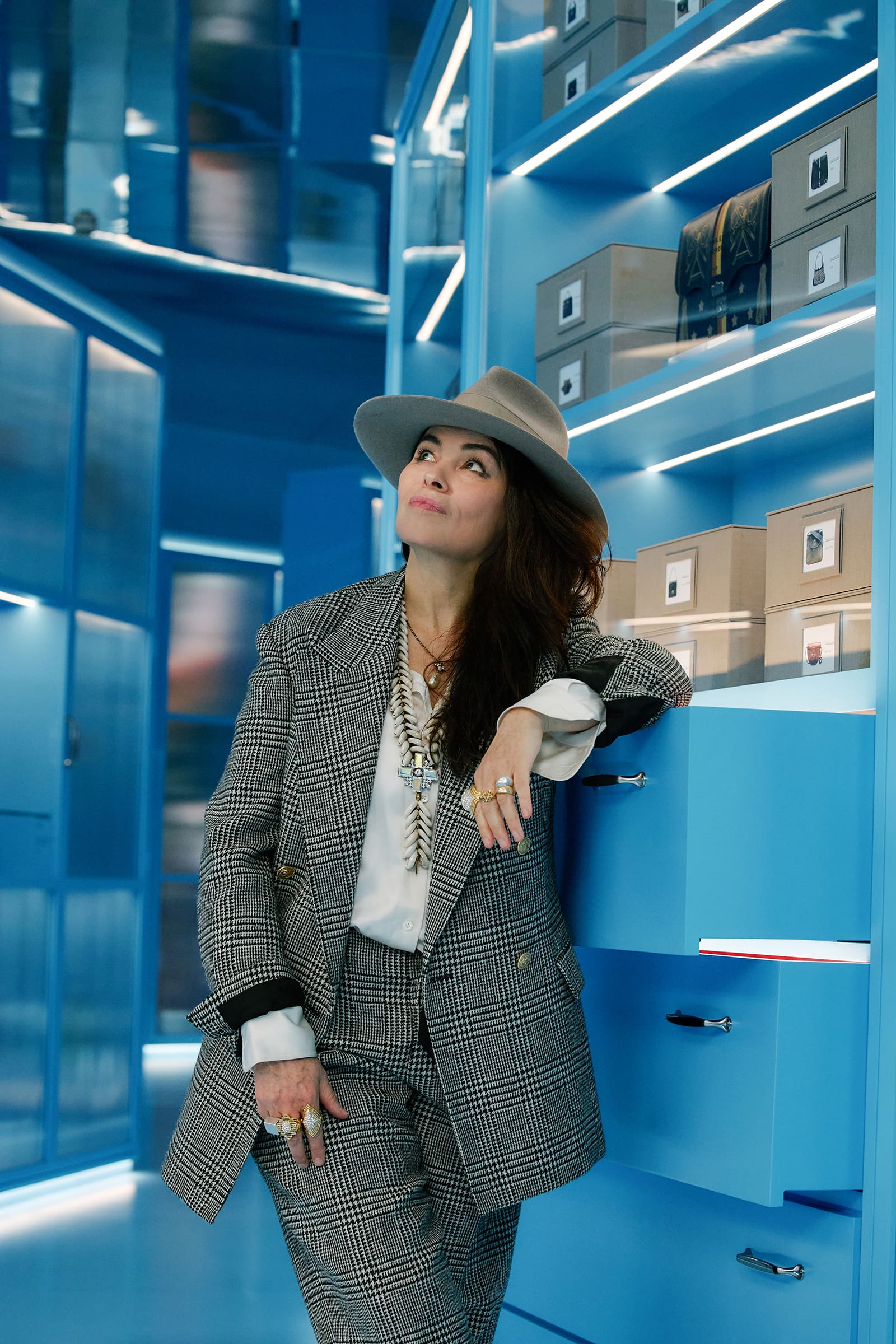
There is a lot to cover in the ambitious project, which spans eight encompassing “worlds” that explore the various facets, symbols, and myths that make up the house of Gucci. “We’ve been wearing the clothes, the clothes have shaped us and we’ve shaped them back,” says Devlin when asked about the essence of time in the exhibit. “And that’s really what I wanted to express in this exhibition is the myth, the origin story, and the myth that’s at the heart of this house.”
Gucci Cosmos starts with “Portals,” which pays homage to founder Guccio Gucci’s time as a porter at The Savoy Hotel in London and focuses mainly on the House’s luxury luggage and leather goods. The installation features a series of concentric conveyor belts that carry not only precious vintage pieces from the different decades, but also dioramas dedicated to the brand’s muses, the likes of Diana, Princess of Wales, Princess Grace of Monaco, and Jacqueline Kennedy Onassis, as well as Gucci global ambassadors like singer Chris Lee and actor Xiao Zhan.
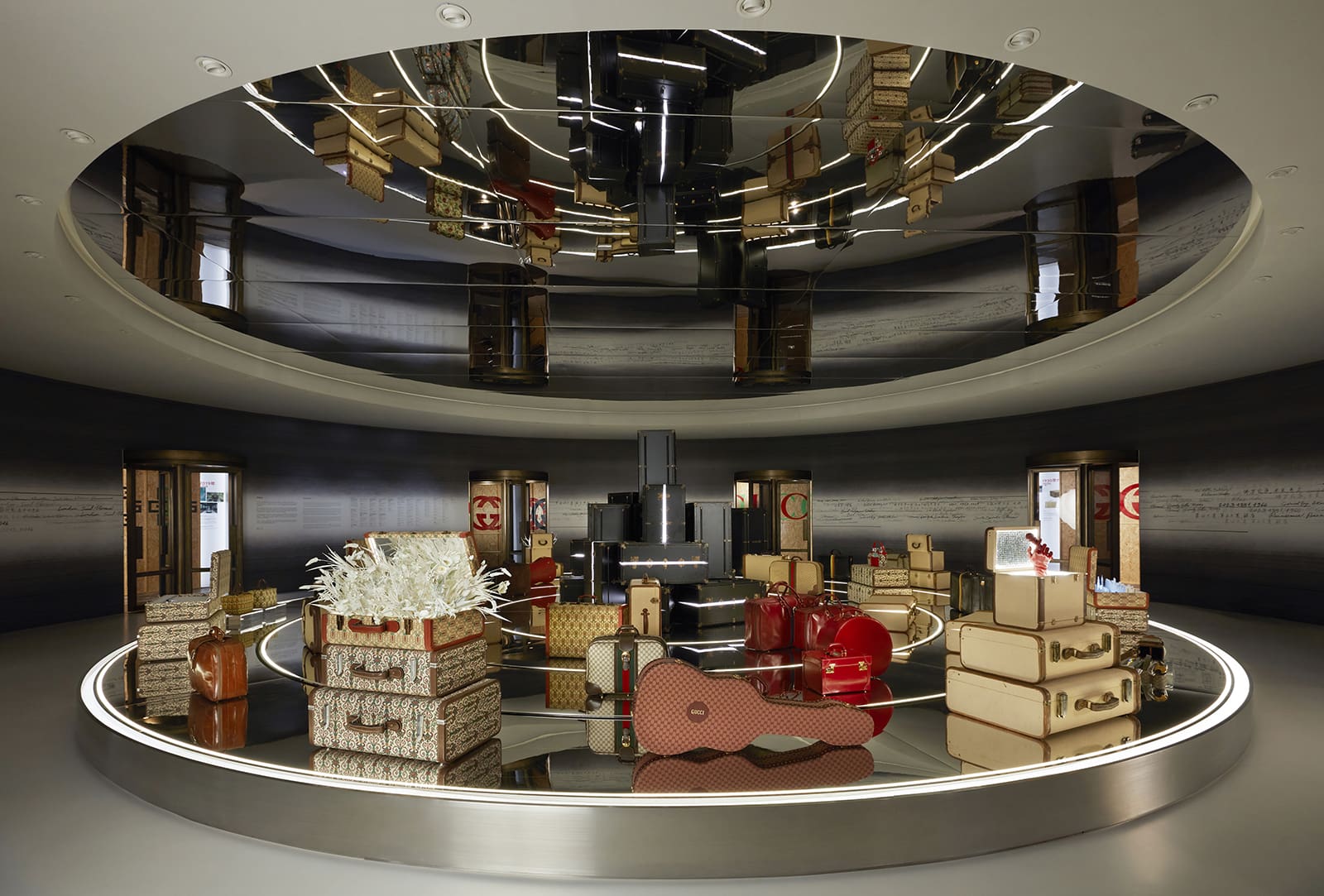
It’s a poignant start and reveals that while the exhibit is intended to be a map, it isn’t linear. Instead, eras overlap; themes, objects, and even the people, including creative directors Tom Ford, Frida Giannini, and Alessandro Michele, circle back time and again.
“Fashion is the only system that always works on its history, always managing to renew itself, generating the present fashion,” says Frisa. “This circularity that Es has managed to represent so well in this exhibition is precisely the circularity of the time of fashion that builds on tradition but continues to renew and innovate continuously.”
This is most clearly seen in “Zoetrope,” which celebrates Gucci’s equestrian heritage through a life-sized projection of a galloping thoroughbred on a curved wall. It is interspersed with slots revealing archival items that feature symbols appropriated from horse-riding: the Horsebit, the Web. There is a riding boot, Ford’s horsebit clutches rendered in python, and even Michele’s cheeky leather riding crop.

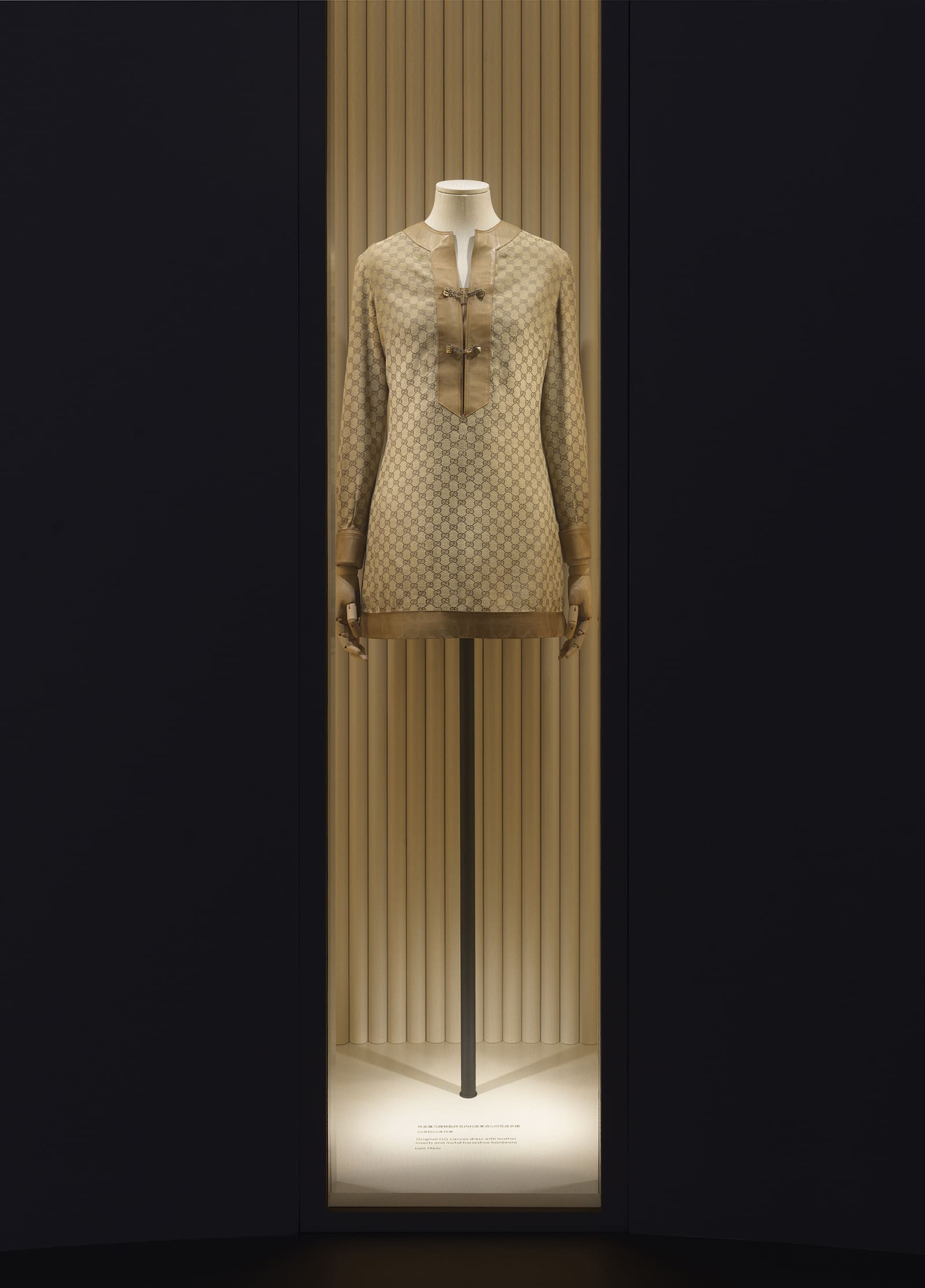
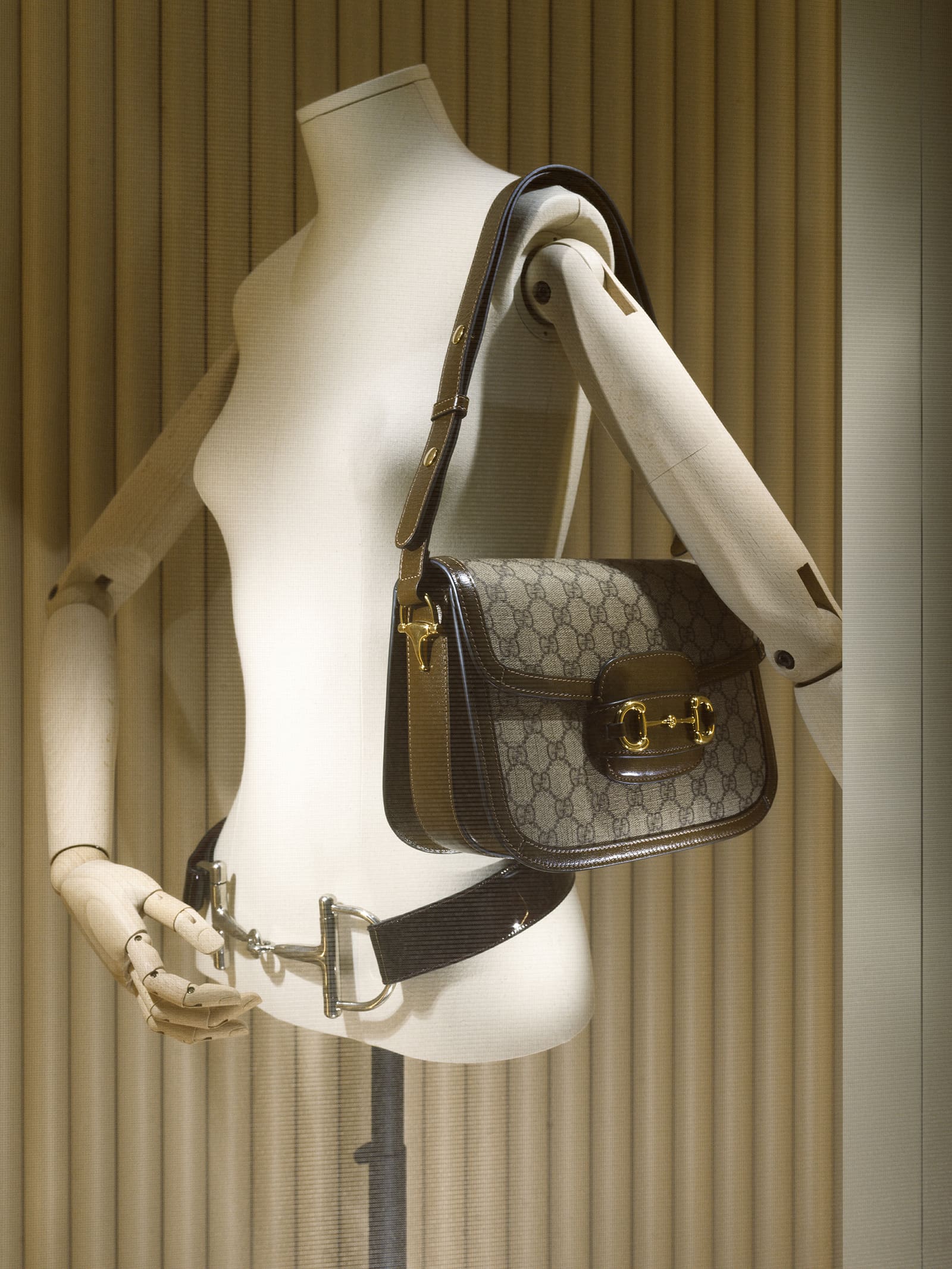
“Here it was interesting to be able to tell stories through a series of objects, to build a dialogue,” says Frisa of the installation. “For me it is always very important to build a relationship between objects. In a fashion exhibition, we can never think of an item only in relation to itself; we must first reflect on the value of the object in connection with the brand’s history and society.”
“Two” features 10-meter high twin statues dressed in Devlin’s signature kinetic light design. The figures loom large at the center of the exhibit, at one point donning red velvet suits, a highlight from Tom Ford’s seminal Fall 1996 collection.
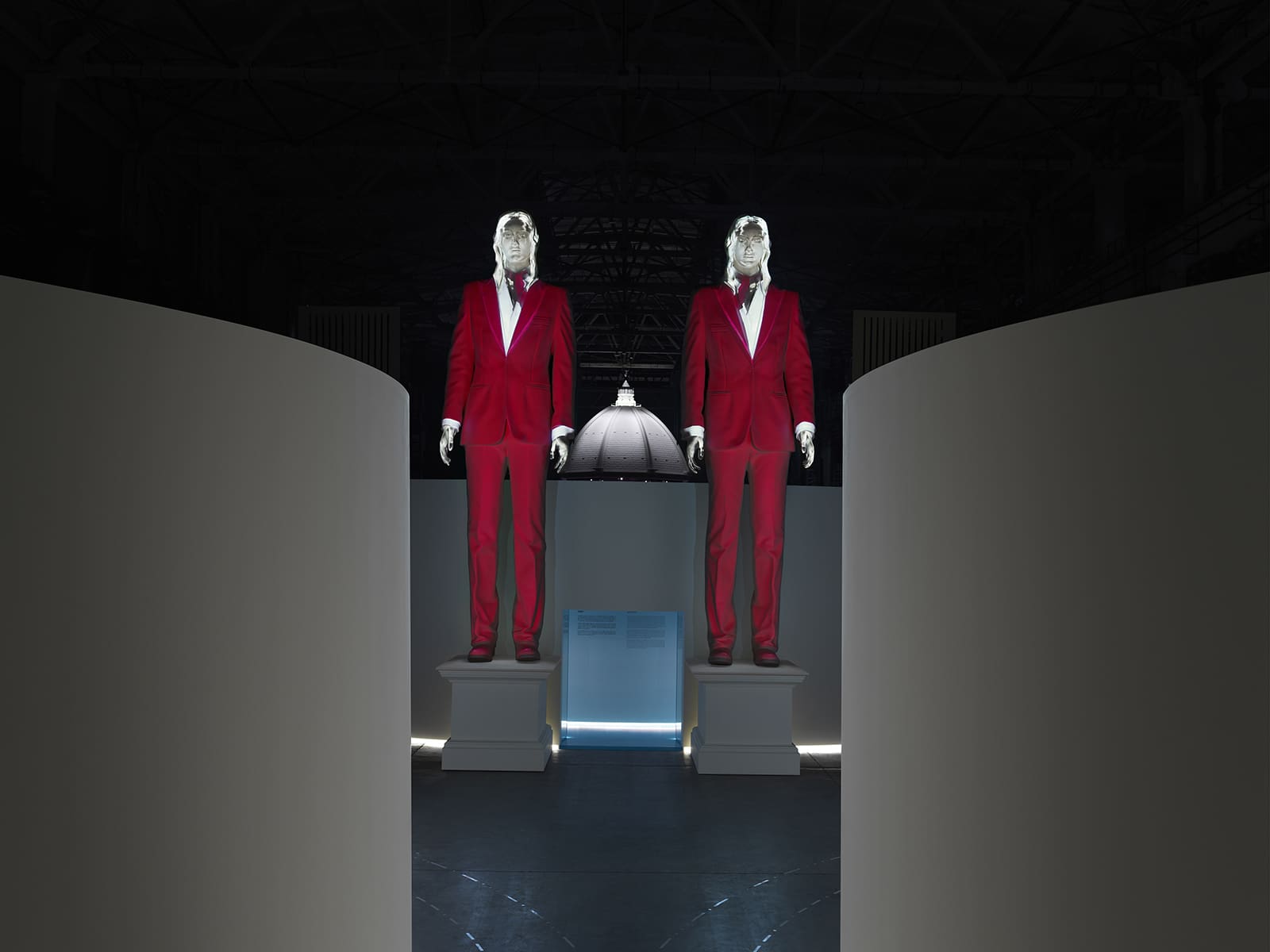
Then there’s the “Cabinet of Wonders,” a rotating red lacquered curio cabinet that rhythmically slots out artifacts ranging from tasseled handbags, perfume bottles, and even an electric guitar. It is described as the beating heart of the Gucci Archive, which leads to “Archivio,” a recreation of the Florence-based collection itself. A labyrinthian installation made up of mirrors and floor-to-ceiling cabinets, some of which slide out to reveal Vittorio Accornero de Testa’s designs for the House’s silk scarves, notebooks detailing craftsmen’s notes for bags, and several of the handbags from the 1950s themselves. There is “Eden,” a veritable garden of delight and wonder where larger-than-life reproductions of Accornero’s flora and insects frolic with the Gucci Flora scarf itself, a gift to Princess Grace, and Alessandro Michele’s Herbarium print suit.
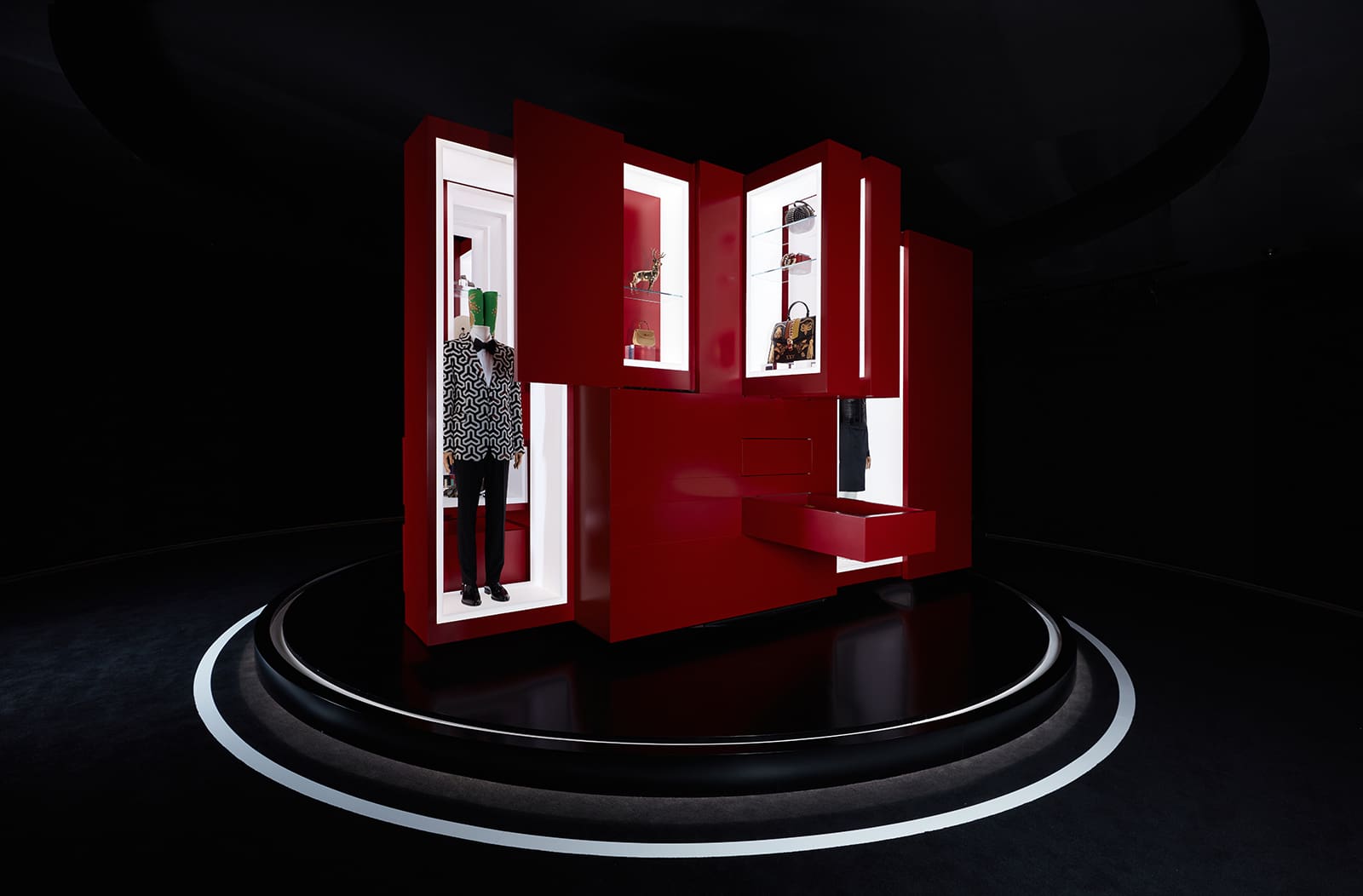
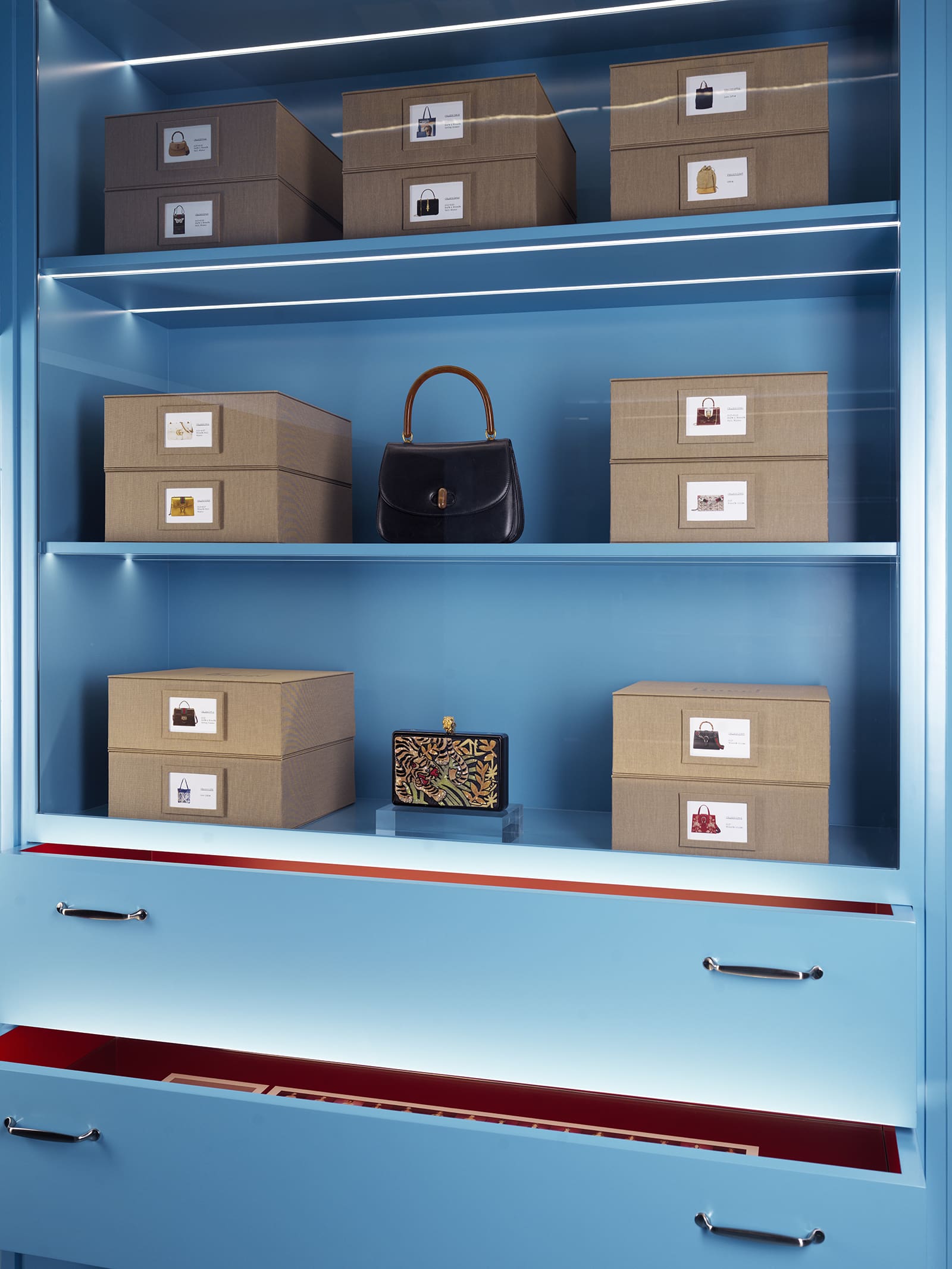

“Carousel” features a rotation of 32 mannequins wearing some of the House’s era-defining pieces. There is a silk shirt and skirt adorned with the G cube print from the early 1970s, a silk cady top and pants from Frida Giannini’s Spring-Summer 2013 collection, silk-satin georgette dress from Alessandro Michele’s Fall-Winter 2015 show, and a several of Ford’s velvet creations. This is overlayed by a screen showcasing the works of select Chinese artists running counter to the direction of the catwalk. The works of Victo Ngai, Vikki Zhang, Li Jianmei, and Currynew are collectively assembled, creating a smooth, continuous composition.


While there is a suggested flow for the exhibit, it is not apparent and visitors are left to wander, each world blooming upon closer inspection. Amid the spectacle of theatrical sounds and gigantic structures, there is a potential to feel a sense of intimate connection. It’s similar to what a fan might experience attending a concert with thousands. Through the hundreds of archival pieces, there’s a moment where one might understand that power of fashion to help define or even transcend ourselves, as Frisa once described in a Vogue interview with writer Tiziana Cardini.
It also becomes evident that the story of Gucci, which started in 1921 when Guccio Gucci opened his leather shop, continues to grow, each generation building upon its traditions, adding chapters.
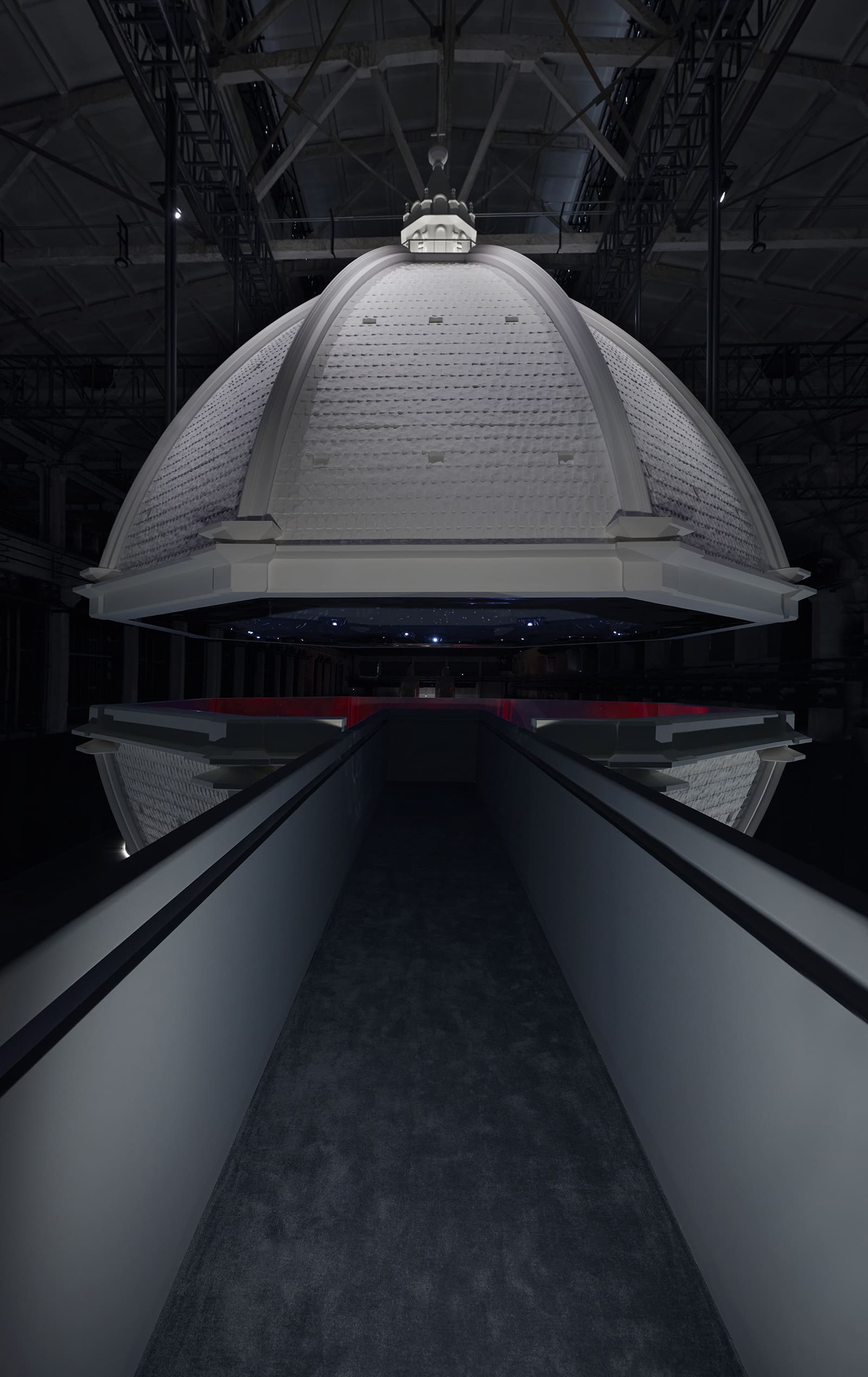
“I want to tell a story about cathedral thinking. You may have heard this phrase before,” says Devlin. She starts the conference by talking about the last installation, the “Duomo.” “What cathedral thinking means is an idea that cannot be accomplished in a single generation.” She goes on to describe the last world, twin reproductions of the Cathedral of Santa Maria del Fiore mirroring each other and bisected by a suspended platform that immerses visitors in a mesmerizing show of light and sound.
According to Devlin, construction for the cathedral in Florence began in 1296 and was only completed in 1903. “[T]he only reason that such a magnificent cathedral could be built was because each generation of architects handed their ideas, their blueprints, their creativity, their architecture, their technology, their engineering to the next generation,” says the artist. “And that’s, I think, what this House expresses is the handing from one generation to the next.”

